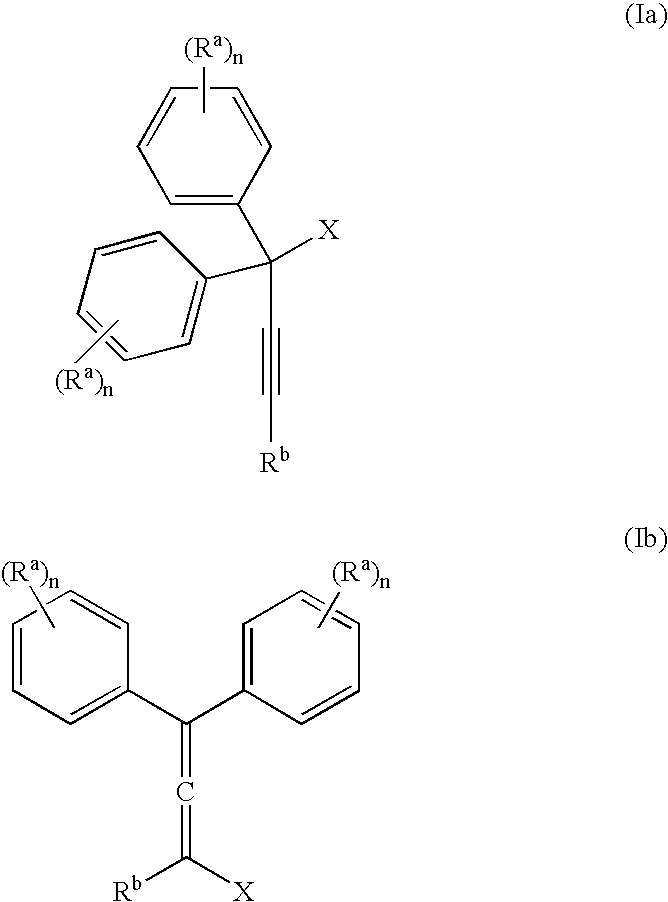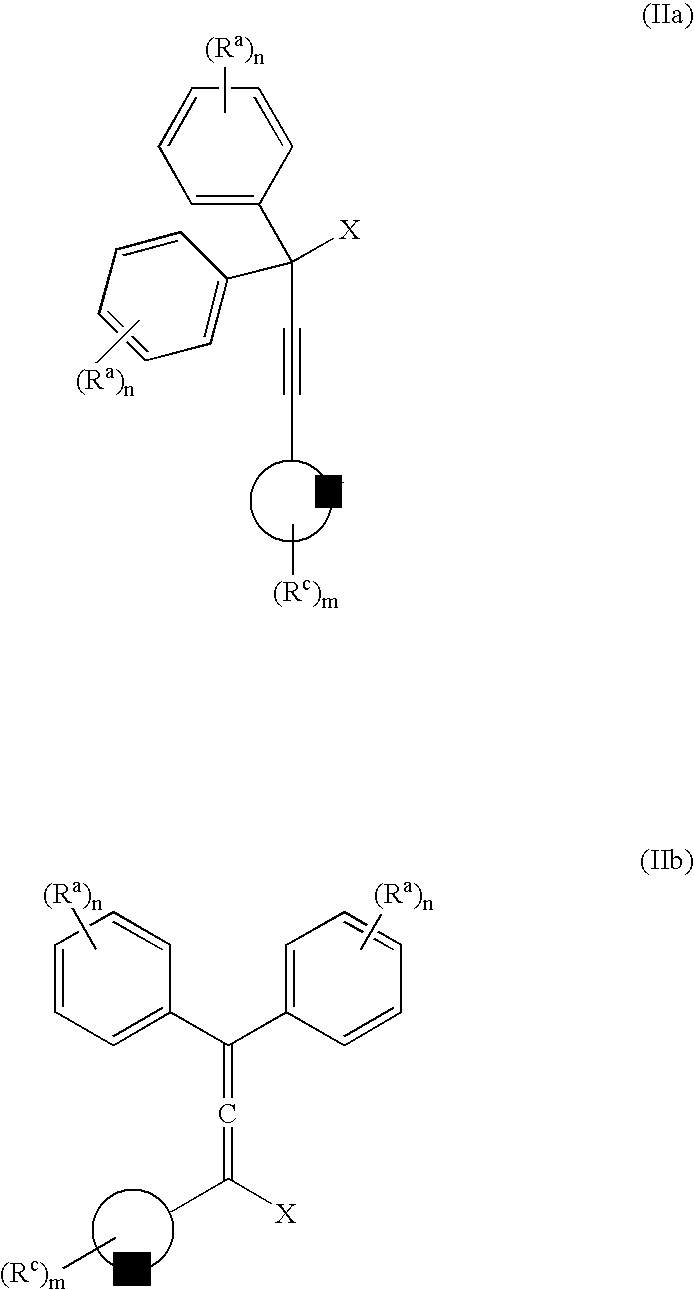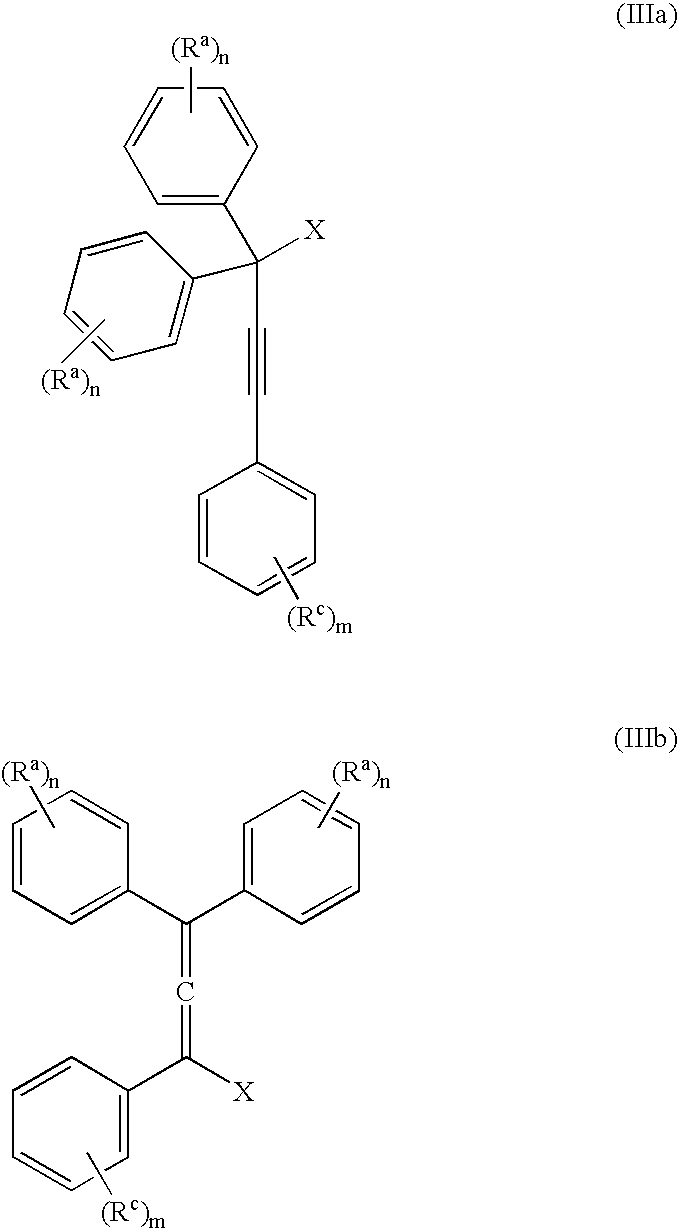Synthesis process
a naphthacene and process technology, applied in the field of naphthacene compound synthesis, can solve the problems of inability to reproduce, low yield of rubrene prepared in this manner, and inability to meet the requirements of synthesis, etc., and achieves simple and rapid preparation. , good yield, high purity
- Summary
- Abstract
- Description
- Claims
- Application Information
AI Technical Summary
Benefits of technology
Problems solved by technology
Method used
Image
Examples
examples
[0056] Sample 1 (Invention, YD-1)
[0057] The invention is exemplified in scheme 1 to prepare compound, YD-1:
[0058] Preparation of the propargyl alcohol, PA-1: Under a nitrogen atmosphere, 4-t-butylphenylacetylene (39.6 g, 250 mMole), was dissolved in dimethylformamide (DMF) (400 mL), stirred with a mechanical stirrer and the solution cool to −10° C. to 0° C. Powdered potassium t-butoxide (KButO) (34 g of 95%, 300 mMole), was added over a 10-minute period and the mixture stirred well for approximately 15 minutes at −10° C. to 0° C. To this mixture was then added 4, 4′-di-tert-butylbenzophenone (70.1 g, 238 mMole) all at once. Stirring was continued at −10° C. to 0° C. for approximately 1 hour and then allowed to come to room temperature over a 1-hour period. At the end of this time the solution was cooled to 0° C. and the reaction treated with saturated sodium chloride (100 mL), keeping the temperature below 10° C. The mixture was then diluted with ethyl acetate, washed with 2N—HCl...
PUM
| Property | Measurement | Unit |
|---|---|---|
| temperature | aaaaa | aaaaa |
| temperature | aaaaa | aaaaa |
| temperature | aaaaa | aaaaa |
Abstract
Description
Claims
Application Information
 Login to View More
Login to View More - R&D
- Intellectual Property
- Life Sciences
- Materials
- Tech Scout
- Unparalleled Data Quality
- Higher Quality Content
- 60% Fewer Hallucinations
Browse by: Latest US Patents, China's latest patents, Technical Efficacy Thesaurus, Application Domain, Technology Topic, Popular Technical Reports.
© 2025 PatSnap. All rights reserved.Legal|Privacy policy|Modern Slavery Act Transparency Statement|Sitemap|About US| Contact US: help@patsnap.com



